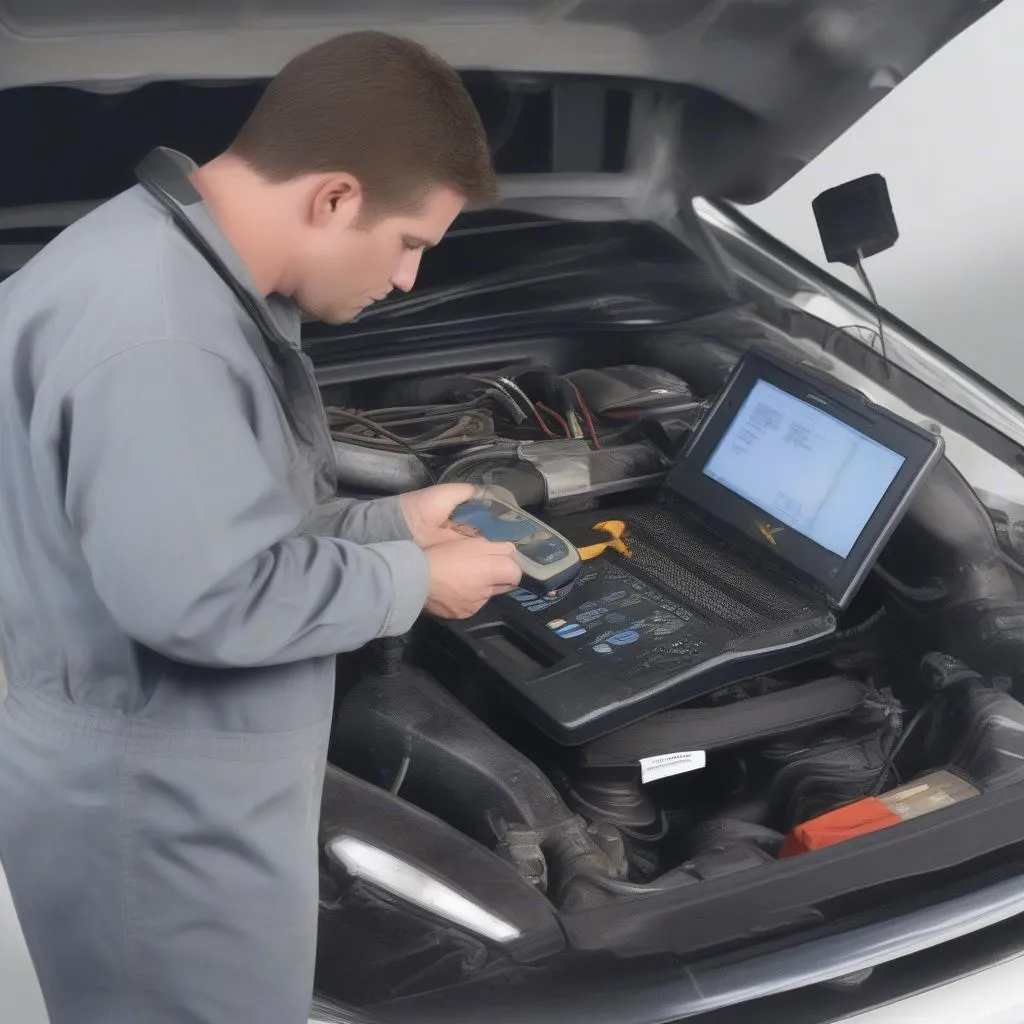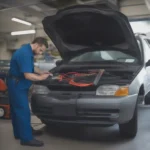Have you ever wondered what those mysterious codes your mechanic throws around when diagnosing your car’s problems mean? You’re not alone! Many car owners are curious about the codes that appear on their vehicle’s dashboard or when using a diagnostic scanner. These codes, known as scan codes for cars, can reveal a lot about your vehicle’s health, from minor issues to serious problems.
Understanding the Importance of Scan Codes for Cars
From a Mechanic’s Perspective
For a mechanic, scan codes for cars are like a roadmap to understanding what’s wrong with your vehicle. It’s a comprehensive language that communicates the problems a car may be facing directly to the mechanic, without any need for guesswork. Imagine trying to diagnose a problem with your car without having this crucial information! It would be like trying to solve a puzzle without having any of the pieces.
From a Technical Perspective
The codes themselves are generated by various sensors and control modules in your vehicle. These modules are responsible for managing everything from engine performance to transmission control to airbag deployment. When any of these modules detect a problem, they send a code to the Diagnostic Trouble Code (DTC) system. This system is a standardized way of communicating problems across various car manufacturers.
From an Economic Perspective
The ability to diagnose and repair car problems quickly and accurately is crucial to keeping costs down. Scan codes for cars help to streamline the repair process, ensuring that mechanics can identify and fix the problem correctly on the first try. This saves you time and money in the long run, compared to the traditional method of trial and error.
Deciphering the Codes: What Do They Really Mean?
The Anatomy of a Scan Code
Scan codes are alphanumeric strings that typically consist of 4 or 5 digits. The first digit usually indicates the category of the problem (e.g., engine, transmission, ABS). The remaining digits provide more specific information about the malfunction.
For example, a code like “P0301” might indicate a misfire in cylinder 1 of your engine. This code provides valuable information that helps mechanics quickly identify the cause of the problem and address it effectively.
Using a Diagnostic Scanner
To access these scan codes for cars, you need a diagnostic scanner. These devices can connect to your vehicle’s On-Board Diagnostic (OBD) port, allowing you to read and interpret the codes stored in the car’s computer.
There are many different types of diagnostic scanners available, from basic OBDII readers to professional-grade scanners used by mechanics. You can find a wide range of scanners at your local auto parts store, online retailers, or even through online diagnostic tools.
Decoding the Codes: Finding Answers Online
The internet is a great resource for understanding the meaning of scan codes for cars. Several online databases and forums are dedicated to deciphering these codes and providing solutions for common problems. Many websites provide comprehensive descriptions of the codes and their possible causes, often with links to relevant repair manuals or articles.
Common Questions About Scan Codes for Cars
Q: Can I reset my car’s scan codes myself?
A: While you can erase the scan codes using a diagnostic scanner, it’s not recommended unless you know exactly what the code means and have the technical knowledge to fix the problem. Resetting the code might temporarily resolve the warning light, but the underlying problem may still persist.
Q: Is it possible to use a smartphone app to read scan codes?
A: Yes! Several smartphone apps allow you to connect to your car’s OBD port and read scan codes for cars. While these apps can be helpful for basic diagnostics, they may not offer the same level of detail as professional-grade scanners.
Q: What should I do if I get a scan code?
A: If you encounter a scan code for cars, it’s best to consult with a qualified mechanic. They can interpret the code, diagnose the issue, and provide a solution for fixing the problem.
Q: How often should I scan my car for codes?
A: It’s generally recommended to scan your car for codes at least once a year, especially if you’re experiencing any unusual symptoms. Regular scans can help you catch potential problems early, saving you money and hassle in the long run.
Beyond Scan Codes: Going Deeper into Diagnostics
While scan codes for cars are a valuable tool for diagnosing issues, they are just one piece of the puzzle. Mechanics often use a variety of methods to investigate problems, including visual inspections, live data analysis, and even road tests.
Think of it like a doctor examining a patient. Scan codes are like the initial diagnosis, but a doctor needs more information to understand the patient’s overall health.
Let’s Connect!
If you’re looking for more information about scan codes for cars, need help with diagnostics, or are interested in learning more about the technology behind these codes, don’t hesitate to contact us! Our team of experts is available 24/7 to answer your questions and provide the support you need.
Whatsapp: +84767531508
We’re here to help you understand the intricacies of your car’s health and keep your vehicle running smoothly for many miles to come.



